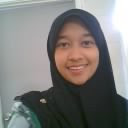In Reading 4.1, it is about the article that told about ‘Body language that speaks to muggers’. In the article, the writer states that the muggers are looking for victims for mugging is from the way they walking. Pedestrians are advised to change their ways of walk to avoid from being a victim for mugging.
In Reading 4.3, it is about WHAT IS THE EVIDENCE. The evidence means information that gives a strong reason for behaving or proves. Evidence is purpose to give answer to questions, describing an event at which one was presented. It is divided to two which testimonial evidence and circumstantial evidence.
· Testimonial evidence - comes form eyewitness
- ask the same as over and again
- could be in verbal or in verbal in statement
· Circumstantial evidence – not coming from the person, it can be seen at
the crime scene.
-ALL THINGS NEED EVIDENCE-
The topic in Reading 4.4 is STATISTIC. It has two meanings.
· Plural – refers to information about any phenomenon or activity expressed
in numerical form.
e.g- vital statistics
· Singular – denotes the art and science of collecting, presenting, analyzing
and interpreting numerical data.
The importance of statistics in human affairs is obvious from our tendency to associate ‘facts’ closely with ‘figures’. Figures that are systematically collected and properly analyzed can be used as the basis for rational decisions and conclusion. Businessmen also depend on statistics in their prediction of sales and costs. The way to guard oneself against being misled by misused statistics is not to shun or mistrust all figures but to become conscious of how statistical procedures may be incorrectly used.
4 Types of Statistical Slips
Unqualified averages
Arithmetic mean – the sum of all values divided by the number of values included.
Median – the middle value in an array of values that range from the highest to the lowest.
Mode – the most frequently occurring value in a group of values.
Fallacious sampling – the sample that is wrong because based on wrong information.
Percentages unaccompanied by actual numbers – percentage without specific figure.
Misleading presentation – using statistic to manipulate impression.
“STATISTICS CAN BE USED TO PROVE ANYTHING”
In Reading 4.5, it is about Crooked and Fallacious Thinking.
Ø Fallacious – if an idea/ something/ argument is fallacious, it’s wrong because based on a fallacy.
Ø Fallacy – an idea which people believe to be TRUE but it is in fact FALSE (based on incorrect info)
Purpose of crooked and fallacious thinking- to influence listener/ readers.
Transfer devise – to change something that people accepted to something that
dislike or conversely.
Circular argument – impression used to describe something as meaningful and
logical but not proven.
- fallacy maybe hard to detect.
False analogy – used to support an argument in fact proved anything.
- superficial or chance similarity giving impression that thing are
always alike.
Either-or assumption – wrong assumption made by other people to influence or
make people believe.
Equivocation – caused by the words used (has more than possible meaning)
- can not be properly answered unless the key terms of the questions are properly defined.
Subscribe to:
Post Comments (Atom)

No comments:
Post a Comment